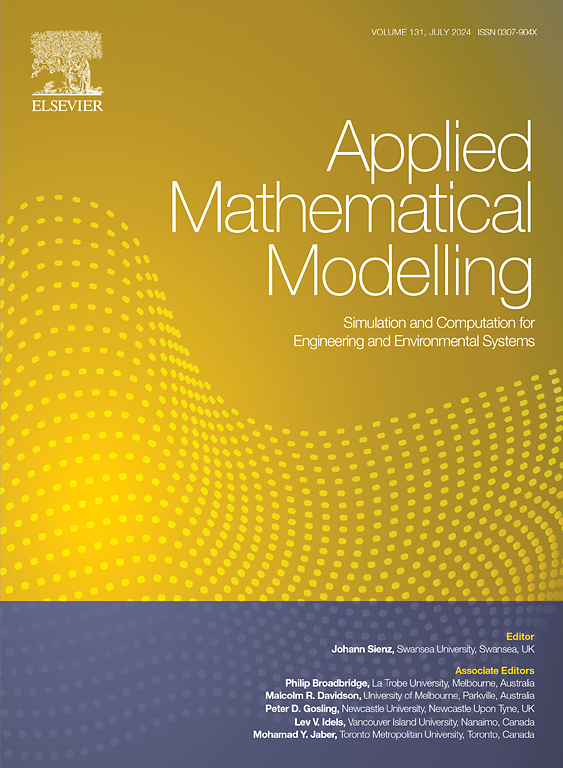An adaptive high-order stochastic perturbation collocation method for uncertainty quantification and propagation
IF 4.4
2区 工程技术
Q1 ENGINEERING, MULTIDISCIPLINARY
引用次数: 0
Abstract
In this paper, an adaptive high-order stochastic perturbation collocation method is proposed with the aim of effectively quantifying and accurately propagating uncertainty in engineering problems. By using the stochastic perturbation theory, this proposed method first performs a seventh-order perturbation expansion, and then combines the collocation method to cleverly construct a non-intrusive calculation format of the seventh-order perturbation expansion. This proposed format avoids the derivation of the stiffness matrix and exhibits the characteristic of a simple and unified form for different problems. In addition, an adaptive point selection method is strategically introduced, which can identify the perturbation terms that have a greater effect on the statistical characteristics of the responses and disregard the perturbation terms that have a lesser effect on them, thus achieving more efficient uncertainty analysis. In combination with the proposed method and the maximum entropy method, the numerical calculation format for the probability density function of the stochastic response is established, so as to fully and intuitively describe the stochastic characteristics of the responses. Through four numerical examples, the proposed method is compared with various uncertainty methods. The results demonstrate that the adaptive seventh-order stochastic perturbation collocation method has the characteristics of higher accuracy and greater efficiency. Especially for the examples with large coefficient of variation of the response, such as those with a coefficient of variation greater than 0.3, the proposed method can also provide the results with high accuracy.
不确定性量化与传播的自适应高阶随机摄动配置方法
本文提出了一种自适应高阶随机摄动配置方法,以有效量化和准确传播工程问题中的不确定性。该方法利用随机摄动理论,首先进行七阶摄动展开,然后结合搭配法巧妙地构造了七阶摄动展开的非侵入式计算格式。该格式避免了刚度矩阵的推导,对不同的问题具有简单统一的特点。此外,策略性地引入自适应点选择方法,识别对响应统计特征影响较大的扰动项,忽略影响较小的扰动项,从而实现更有效的不确定性分析。将所提出的方法与最大熵法相结合,建立了随机响应的概率密度函数的数值计算格式,以便全面、直观地描述响应的随机特征。通过4个算例,将该方法与各种不确定性方法进行了比较。结果表明,自适应七阶随机摄动配置法具有精度高、效率高的特点。特别是对于响应变异系数较大的算例,如变异系数大于0.3的算例,所提出的方法也能提供较高的精度。
本文章由计算机程序翻译,如有差异,请以英文原文为准。
求助全文
约1分钟内获得全文
求助全文
来源期刊

Applied Mathematical Modelling
数学-工程:综合
CiteScore
9.80
自引率
8.00%
发文量
508
审稿时长
43 days
期刊介绍:
Applied Mathematical Modelling focuses on research related to the mathematical modelling of engineering and environmental processes, manufacturing, and industrial systems. A significant emerging area of research activity involves multiphysics processes, and contributions in this area are particularly encouraged.
This influential publication covers a wide spectrum of subjects including heat transfer, fluid mechanics, CFD, and transport phenomena; solid mechanics and mechanics of metals; electromagnets and MHD; reliability modelling and system optimization; finite volume, finite element, and boundary element procedures; modelling of inventory, industrial, manufacturing and logistics systems for viable decision making; civil engineering systems and structures; mineral and energy resources; relevant software engineering issues associated with CAD and CAE; and materials and metallurgical engineering.
Applied Mathematical Modelling is primarily interested in papers developing increased insights into real-world problems through novel mathematical modelling, novel applications or a combination of these. Papers employing existing numerical techniques must demonstrate sufficient novelty in the solution of practical problems. Papers on fuzzy logic in decision-making or purely financial mathematics are normally not considered. Research on fractional differential equations, bifurcation, and numerical methods needs to include practical examples. Population dynamics must solve realistic scenarios. Papers in the area of logistics and business modelling should demonstrate meaningful managerial insight. Submissions with no real-world application will not be considered.
 求助内容:
求助内容: 应助结果提醒方式:
应助结果提醒方式:


